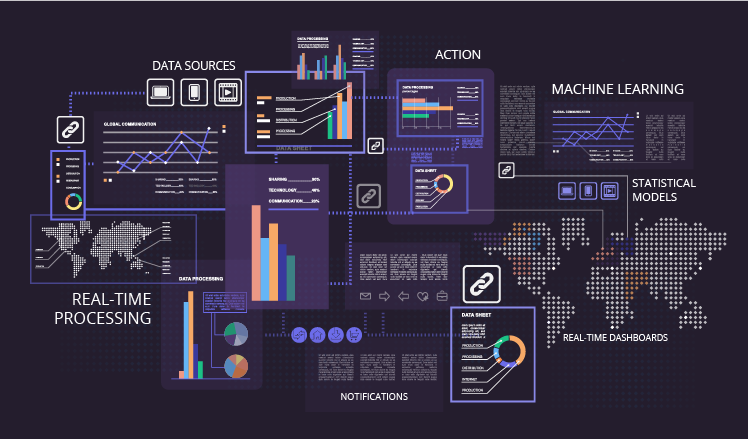
While real-time analytics and big data are both trending, it seems that real-time big data analytics, which is their combination, should be a very promising initiative, and many businesses should be desirous of it. Let’s find out if this is really so.
You will find this article richly supplied with the examples of real-time customer big data analytics. We’ve done so for the reasons of ease and consistency. Though there are more areas where real-time data analytics can be applied.
As real-time is often confused with instantaneous, let’s clarify the time frames for data input and response. As far as data input is concerned, the real-time processing engine can be designed to either push or pull data. The most widespread example is a push option with an incessantly flowing high-volume data (also known as streaming). However, the real-time processing engine is not always capable of ingesting streaming data. Alternatively, it can be designed to pull data by asking if any new data has arrived. The time between such queries depends on business needs and can vary from milliseconds to hours.
Correspondingly, the response time also varies. For instance, a self-driving car requires a very fast response time – just several milliseconds. If we deal with sensors installed, say, to a wind turbine and they communicate a slowly growing gearbox oil temperature, which is still below the critical level but higher than normal, we need one-minute response time to change blade pitch, thus offloading the turbine and preventing machine breakdown or even fire. However, a bank’s analytical system would allow several minutes to assess the creditworthiness of an applicant; and a retailer’s dynamic pricing can take up to an hour to update. Still, all these examples are considered real-time.